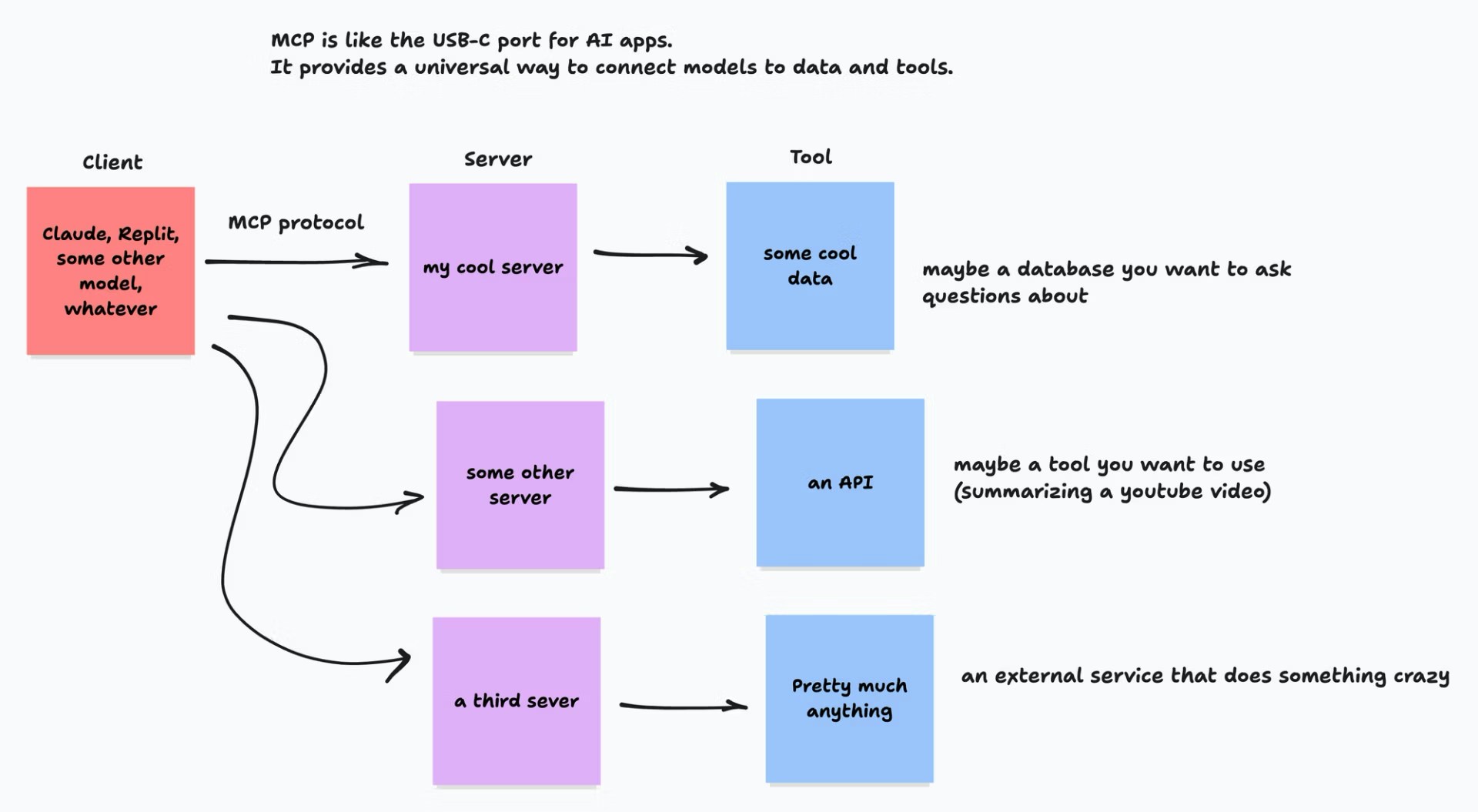
Matt Palmer
Head of Developer RelationsWhy AI models need MCP to connect with the real world
AI models like Claude and GPT are powerful but limited to what they were trained on. Without access to external tools and data sources, they can’t:- Access up-to-date information
- Interact with external systems
- Perform actions in the real world
- Work with your private data
What MCP does: The universal connector for AI apps
Model Context Protocol (MCP) solves this by creating a universal way for AI to connect to tools and data sources - similar to how USB-C standardized device connections.
- Access specialized tools and APIs
- Work with private data sources
- Perform actions in the real world
- Connect to other systems seamlessly
How MCP works: Understanding the key components
The MCP architecture has three main components:- The Client Side: AI models like Claude or applications that need to access external tools
- The Communication Layer: The protocol itself that standardizes how requests and responses are formatted
- The Server Side: Programs that provide access to tools, data sources, and specialized capabilities
What's an MCP client?
What's an MCP client?
An MCP client is something like Claude or a command-line interface that connects to a large language model (LLM). It’s the device that needs to plug into external tools or data sources.Examples of MCP clients:
- Claude in the browser
- Command-line interfaces for AI
- Custom applications built with AI SDKs
What's an MCP server?
What's an MCP server?
An MCP server provides tools and capabilities to AI models. Think of it like giving AI a set of specialized tools to solve problems.Examples of what MCP servers enable:
- Accessing specific data sources to answer questions
- Connecting AI to APIs so it can go online
- Enabling video summarization or transcript fetching
- Writing files to your computer
- Making calculations or running code
MCP capabilities that extend AI functionality
MCP provides several key features that make it powerful for AI applications:- Resources: Share data and content with AI models
- Tools: Let AI models perform actions through your services
- Prompts: Create reusable templates for consistent AI interactions
- Sampling: Allow your services to request information from AI models
- Transports: Connect clients and servers efficiently
Try MCP yourself: Build an AI tool in minutes
1
Set up an MCP environment
Replit provides Templates that let you experiment with MCP without installing anything. These Templates include all the necessary components to connect AI models to useful tools.To get started quickly:
- Remix this template: Learn about MCP
- Wait for the environment to load completely
- You’ll have a ready-to-use MCP setup with no configuration needed
2
Run a practical example
A simple demonstration shows how MCP enables AI to:This demonstrates how MCP gives AI models abilities they wouldn’t normally have.
- Fetch a YouTube video using just a URL
- Get the content or transcript of that video
- Write a summary to a file on your system
3
Customize for your needs
Once you understand the basics, you can connect MCP servers to your own data sources or create custom tools that your AI can use to solve specific problems.
Real-world applications you can build with MCP
MCP enables a wide range of powerful AI applications:- Customer service systems that can access company databases to answer specific questions
- Research assistants that can search and summarize content from multiple sources
- Productivity tools that can interact with your files and applications
- Content creation tools that can access media libraries and publishing platforms
Benefits of using MCP for your AI projects
MCP offers three key benefits:- Ready-to-use integrations your AI can connect to immediately
- The ability to switch between different AI providers without rewriting your connections
- Security features that keep your sensitive data protected
MCP is an emerging standard with growing support across the AI ecosystem. More tools and integrations are being added regularly.
Next steps: Go further with MCP development
Explore more MCP examples
Explore more MCP examples
- Check out Templates on Replit to experiment without installing anything
- Look through the MCP protocol documentation to understand how it works
- Join the MCP community to see what others are building
Build your own MCP server
Build your own MCP server
- Create custom tools that connect to your data sources
- Develop specialized capabilities for your AI applications
- Share your MCP servers with the community